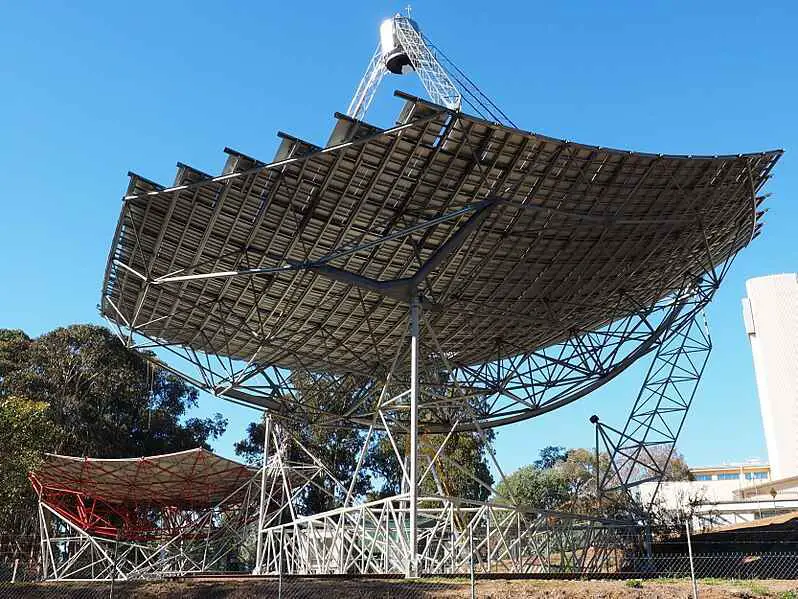5 Examples of Active Solar Energy Systems and Characteristics
Examples of active solar energy systems are; pumped-solar air heating system, concentrated solar power plant/system, solar water heater, fluid-based solar radiator, hybrid solar cogeneration system with panels.
This article discusses the examples of active solar energy systems and their characteristics, as follows;
1). Pumped-Solar Air Heating System (as one of the Examples of Active Solar Energy Systems)
Solar air heaters work by a process of convective thermal energy transfer between a fluid and the air in a given area of space.
They are ideal for environments and periods with high heat levels and significant amounts of solar radiation, such as hot-and-dry desert climatic zones areas susceptible to urban heat island effect.
The difference between solar water heaters and solar air heaters is in the substrate or medium to which thermal energy is ultimately transferred; where the former transfer their thermal energy to water and the latter to air.
As an active solar energy system, pumped-solar air heater features a hydro-mechanical component that facilitates energy transfer by pumping the fluid through conduits in a continuous cycle.
Electricity to power the pump is often derived by photovoltaic conversion using solar panels, which are integrated into the air heating system. This setup is sustainable, because it eliminates the need for non-renewable energy resources in any part of the system, rather substituting between passive and active renewable solar energy.
Studies show that the inclusion of pumping mechanism in solar air heating systems increases both efficiency and performance significantly, while reducing energy losses [4].
The disadvantages of solar air heaters with pumping components include higher systemic complexity, maintenance challenges, and the additional energy needs of the heat pump.
2). Concentrated Solar Power Plant/System
Concentrated solar power plant or system is one of the most important examples of active solar energy application, especially with regards to its use in the generation of electricity.
A concentrated solar power system (CSP) is one that is designed to capture (or collect) significant amounts of diffuse solar electromagnetic radiation, and to reflectively project this radiation as a high-intensity beam, toward a target element.
To achieve its objective, these systems are generally equipped with solar concentrators; that occur in the form of parabolic plates or dishes that have suitable area of curvature and focal point to produce a powerful convergent beam from rays that fall on their surface, as they reflect these rays to a given point.
Types of concentrated solar power systems are; tower, dish, and linear concentrated systems, which are differentiated by the geometry and orientation of their concentrator components.
A concentrated solar power plant becomes active when it works with an electromechanical device or component. In most cases, this device(s) include steam turbines and electric generators [2].
Infrared rays in solar radiation can be collected and reflected as high-powered thermal beams unto a steam generator, which may use the heat to produce steam. In cases where solar heat is not sufficient, auxiliary heat sources may be used. Otherwise, a low-boiling point working fluid and/vacuum chamber can be used in order for vaporization to occur at lower temperature than the boiling point of water.
The steam produced by this means can be used to spin a turbine, which activates an electromagnetic generator that generate electricity.
Concentrated solar power systems are usually designed to operate on a larger scale than other active solar technologies, and represent a major outcome of efforts to achieve energy transition to clean alternatives.

3). Solar Water Heater (as one of the Examples of Active Solar Energy Systems)
Active solar water heating systems are solar systems that utilize pumping mechanisms in the production of hot water.
This pumping mechanism may occur at any of various stages in the hot water production process. A circulatory heat exchanger carrying solar-heated fluid may be used to raise the temperature of water in a reservoir by any of the thermal energy transfer mechanisms like conduction, convection or radiation.
Otherwise, hot water may be produced by direct solar heating of a reservoir, from which the water is then pumped to the point(s) of use.
The components of active solar water heating systems include pumps, water reservoirs (for storage), valves (for flow control), conduits, and solar collectors.
Types of active solar water heaters are; closed and open solar water heaters, which are differentiated by how the working fluid is contained.
As an active solar energy system, water heaters are very helpful for reducing energy cost in buildings with high demand for hot (or warm) water, especially when these buildings are situated in areas with favorable climate for solar energy capture.

4). Fluid-Based Solar Radiator
A fluid-based solar radiator is simply a solar heater that uses active fluid circulation to improve the efficiency of radiant heat transfer in buildings.
It is distinguished from conventional solar air and water heater by its reliance on radiation as a sole means of transferring heat that has been collected from solar sources.
In some cases, solar radiators are fully integrated into buildings by exposed components like the roof, as solar collector.
Heat from the Sun is captured by these components, and conducted to a fluid which is pumped and circulated in a heat exchanger within the building, so that the heat may be released in radiant form, into the building.
Asides the fluid-based method, some radiators operate using electricity from solar panels.
5). Hybrid Solar Cogeneration System (as one of the Examples of Active Solar Energy Systems)
Solar is considered a cogeneration element when it is used to generate heat and electricity simultaneously, either as a sole energy resource, or in combination with other sources of energy.
In general, a cogeneration system works by generating electricity from thermally-mobilized fluid systems like steam turbines, while reserving some of the heat produced in the process, either by energy recovery (of waste heat as a byproduct) or by direct production and collection for use.
Hybrid solar cogeneration systems use solar energy in its thermal and photoelectric forms.
In some cases, this may involve heating a gaseous working fluid with solar thermal energy, then using the pressurized hot fluid to spin a gas turbine [3] while waste heat is conserved for other purposes.
In other cases, the thermal or electric portion of solar energy can be used for industrial processes, such as production of green hydrogen [1] while power is simultaneously being generated.
Very large solar cogeneration systems may feature more than one energy source, which may be also renewable, like geothermal or wind. The key characteristic of such systems is the presence of an active mechanical process or component, which in most cases is the working fluid for conveying solar heat from one point to another.
Conclusion
Examples of active solar energy systems are;
1. Pumped-Solar Air Heating System
2. Concentrated Solar Power Plant/System
3. Solar Water Heater
4. Fluid-Based Solar Radiator
5. Hybrid Solar Cogeneration System
References
1). Lykas, P.; Georgousis, N.; Kitsopoulou, A.; Korres, D. N.; Bellos, E.; Tzivanidis, C. (2023). "A Detailed Parametric Analysis of a Solar-Powered Cogeneration System for Electricity and Hydrogen Production." Appl. Sci. 2023, 13, 433. Available at: https://doi.org/10.3390/app13010433. (Accessed 20 April 2023).
2). Poullikkas, A.; Rouvas, C.; Hadjipaschalis, I.; Kourtis, G. (2012). "Optimum sizing of steam turbines for concentrated solar power plants." Available at:
3). Pradeep, N.; Reddy, K. S. (2022). "Design and investigation of solar cogeneration system with packed bed thermal energy storage for ceramic industry." Renewable Energy, Elsevier, vol. 192(C), pages 243-263. Available at: https://ideas.repec.org/a/eee/renene/v192y2022icp243-263.html. (Accessed 20 April 2023).
4). Segnon, J. R.; Njoku, H. (2021). "OUTDOOR PERFORMANCE OF AN IMPROVED THERMOELECTRIC HEAT PUMPING SOLAR AIR HEATER." Turkish Academy of Sciences (TUBA) World Conference on Energy Science and Technology (TUBA WCEST 2021), Turkey. Available at: https://www.researchgate.net/publication/354076706_OUTDOOR_PERFORMANCE_OF_AN_IMPROVED_THERMOELECTRIC_HEAT_PUMPING_SOLAR_AIR_HEATER. (Accessed 20 April 2023).

